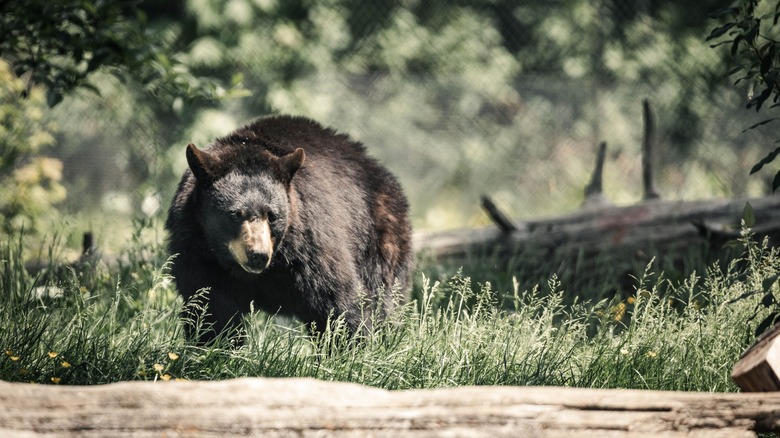Why You Should Leave The Bear Spray At Home When Visiting These California National Parks
We may receive a commission on purchases made from links.
Carrying and knowing how to use bear spray is among the advice given to those adventuring in bear territory by safety and survival experts. In fact, advice on choosing and properly using bear pepper spray is even included on the National Park Service's bear safety page. Ironically, there are a handful of national parks where bear spray is actually banned, including four sites located in California.
Visitors are not allowed to possess bear spray within Yosemite National Park, Lassen Volcanic, Sequoia, and Kings Canyon National Park. While bear spray is allowed — and even encouraged — in most national parks, there are a handful across the country where it is not allowed. Additionally, there are others such as Olympic National Park where bear spray is legal to carry, but strongly discouraged. So, it is always advisable to check park regulations in regards to bear spray when preparing to visit any national park within bear territory.
In most of these instances, although these parks contain a high population of black bears, including an estimated 300 to 500 in Yosemite, it has been determined pepper spray could be more of a detriment than an aid and park goers are encouraged to use other intervention techniques. It is worth noting none of the parks where bear spray is banned have a population of brown or grizzly bears — the last sighting of a grizzly in Yosemite was more than 100 years ago. However, black bears are still considered a dangerous type of bear. So, it is still important to know what actions to take since you'll be leaving the bear spray at home when visiting these California national parks.
Ways to stay safe without bear spray
Just because a park bans the use or possession of bear spray does not mean the threat of encountering or being attacked by a bear does not exist. The fact that grizzlies are not present also does not eliminate this threat. In fact, black bear incidents are becoming more common and California recorded its first fatal black bear attack in history in 2024. So, it is important to take precautions to avoid such encounters.
One proven method is to make noise to avoid bears while hiking or moving through the woods. This will alert bears to your presence so you do not accidentally surprise them. Most often, the bears will move away peacefully if they know you're coming. While camping, it is also important to avoid making mistakes that attract bears to your campsite, such as improper food storage or setting up camp next to a berry field. Following safe camp cooking protocol, such as preparing meals away from your sleeping area, will also help you stay safe.
If you do encounter a bear, it is important not to run, as that could incite an attack. Furthermore, the Park Service recommends first talking in a calm voice and making yourself look as big as possible. Black bears are known to be skittish and will often move away. If that does not work, try yelling, blowing a safety whistle, or blasting a bear horn to scare the bear away. If you are able to leave the area, do so, but do not run or turn your back on the bear. If a black bear does attack, do not play dead; instead, fight back and use whatever you can grab as a weapon.

